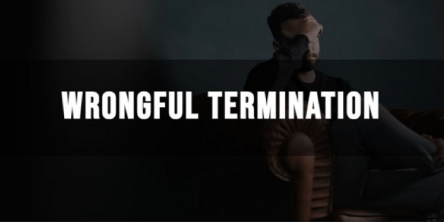IP Litigation in 2024: The Latest Strategies and Tactics for Winning in Court

As you stand at the crossroads of innovation and property, the landscape of intellectual property litigation spreads before you, fraught with both peril and opportunity. In 2024, the game board has been set with new pieces, each move dictated by the latest strategies and tactics that can mean the difference between triumph and defeat in the courtroom. You're aware that understanding the current trends in patent legislation, the shifting winds of the Supreme Court and Federal Circuit decisions, as well as the impact of emerging technologies on trademark and trade dress protection, is crucial. Now, consider the influence of national security on IP policy and the relentless evolution of IP rights as you maneuver through this complex terrain. With a keen eye on the horizon, you'll need to anticipate the next shifts in this dynamic field to protect your intellectual assets effectively, and the insights from the upcoming webinar could be the compass you need to navigate these turbulent waters. Will you be prepared to adapt and outmaneuver your adversaries with the freshest arsenal of legal tools at your disposal? Join us to explore how the ground is shifting beneath your feet and what it takes to stay one step ahead in the art of IP warfare.
Key Takeaways
● Recent case law, such as Warner Chappell Music, Inc. v. Nealy and Vidal v. Elster, has set new precedents in copyright and trademark law, impacting litigation strategies for years to come.
● Leveraging data analytics in IP litigation provides unprecedented insights, including trend analysis, opposition research, judicial analytics, and strategy assessment.
● Navigating international IP issues requires understanding diverse legal frameworks, utilizing the Unified Patent Court, and having a robust international IP strategy.
● Utilizing alternative dispute resolution (ADR) methods, such as arbitration and mediation, offers streamlined and cost-effective pathways to resolving patent disputes, minimizing disruption and expense.
Analyzing Recent Case Law
In dissecting recent case law, it's essential to recognize how Warner Chappell Music, Inc. v. Nealy and Vidal v. Elster have set new precedents in copyright and trademark law, influencing litigation strategies for years to come. These landmark decisions, rendered by courts with a keen eye on the evolving nature of intellectual property rights, underscore the importance of adaptability in legal arguments and the foresight to anticipate how current decisions impact future disputes.
Take Warner Chappell Music, Inc. v. Nealy, for instance. This case exemplifies the intricate balance between protecting creative works and acknowledging fair use, a concept that has been progressively refined in recent case law. It's a prime example for you to understand that copyright litigation hinges not only on the originality of a work but also on the context of its use.
Moving to Vidal v. Elster, the decision underscores that trademark law is not static. The case's outcome has been a touchstone for assessing the distinctiveness of trade dress, echoing the success of the Guitar Hotel's guitar-shaped design registration. It's a clear signal that unique and inherently distinctive trade dress can garner robust protection, reinforcing the trend in recent case law toward vigorously safeguarding such intellectual property.
As you navigate the complex waters of patent litigation, keep a close eye on the Supreme Court's recent decisions. Their pronouncements are reshaping the intellectual property landscape, setting the stage for how copyright and trademark holders assert their rights.
In essence, staying attuned to recent case law is not merely academic; it's a strategic imperative. By analyzing these judicial trends, you're better positioned to craft winning strategies that align with current legal standards and public policy, especially as they evolve in the face of new challenges like AI integration into the creative process.
Leveraging Data Analytic
Harnessing data analytics transforms the landscape of IP litigation, offering you unprecedented insights that can sharpen your strategic edge in court. As you navigate the complexities of patent litigation, the intelligent application of data analytics equips you with a robust toolkit to not only understand historical trends but also to forecast litigation outcomes with greater accuracy. For expert guidance on IP matters, consult with an IP attorney who can provide valuable insights and support. This predictive power is a game-changer when it comes to winning in court.
Imagine the possibilities when every decision is informed by data:
● Trend Analysis: Revealing the ebb and flow of patent litigation to anticipate industry shifts.
● Opposition Research: Uncovering patterns in adversaries' tactics that could predict their next moves.
● Judicial Analytics: Gauging the leanings and predispositions of judges to tailor persuasive arguments.
● Strategy Assessment: Evaluating the success rates of various litigation strategies across cases similar to yours.
● Risk Management: Pinpointing potential pitfalls in your case by cross-referencing with historical data.
By leveraging these aspects of data analytics, you position yourself at the forefront of legal innovation. You're not just reacting to the moves of the opposition; you're anticipating them. The analysis of an opponent's litigation history, when done through the lens of data analytics, reveals much more than what meets the eye. It's a deep dive into their strategic soul, giving you the upper hand.
Similarly, understanding the tendencies of judges and courts means you can tailor your arguments to resonate more effectively, increasing your chances of a favorable outcome. Moreover, the strategic application of data analytics can uncover which tactics have historically led to success, allowing you to optimize your approach.
In a world where every edge counts, data analytics is the ace up your sleeve for winning in court. Use it wisely, and you'll not only stay one step ahead but also pave the way for continued success in the realm of IP litigation.
Navigating International IP Issues
While data analytics empowers you to predict and shape the course of domestic IP litigation, the challenge intensifies when you're faced with the intricacies of international intellectual property disputes. The landscape is a patchwork of diverse legal frameworks, making it essential to grapple with international treaties and agreements to secure your IP rights globally. You can't afford to overlook the significance of the Unified Patent Court (UPC) in this arena. The UPC streamlines patent litigation across participating EU member states, affecting strategies around patent eligibility and enforcement.
To navigate these waters, you must also appreciate the nuances of culture, language, and business practices that influence IP enforcement overseas. For instance, what constitutes a trade secret in one jurisdiction may not align with another's definition, complicating the protection of your intangible assets.
Developing a robust international IP strategy is not just advisable; it's imperative. This approach ensures that your intellectual property assets are safeguarded in the expansive global marketplace. Your strategy should incorporate a detailed understanding of regional differences in IP law and the ability to anticipate how these can impact your rights and remedies.
Working with seasoned legal counsel and IP professionals who specialize in international issues is crucial. They offer the expertise to effectively navigate and resolve international IP disputes, ensuring that your intellectual property's value is maximized across borders. Remember, in the realm of international IP litigation, knowledge is power, and precision is your ally. By focusing on these strategic considerations, you position yourself to outmaneuver the complex web of global IP challenges successfully.
Utilizing Alternative Dispute Resolution
You'll find that embracing Alternative Dispute Resolution (ADR) methods can offer a streamlined and cost-effective pathway to resolving patent disputes outside the courtroom. In the complex landscape of patent law, where litigation can be prolonged and expensive, ADR stands as a beacon of efficiency, especially when both parties are keen to minimize disruption and expense. Here's how ADR can transform the battleground of IP disputes:
● Arbitration can lead to binding decisions without the need for a protracted trial, maintaining confidentiality and control over the process.
● Mediation offers a collaborative environment where parties can explore creative settlements under the guidance of a skilled mediator.
● Settlement negotiations facilitated by ADR can preserve vital business relationships that might otherwise suffer in the adversarial setting of a courtroom.
● Mini-trials before a panel of experts can provide a non-binding evaluation of the strengths and weaknesses of a case, promoting informed decision-making.
● Early neutral evaluation by experts, often in technical fields relevant to the IP law issue at hand, can help parties gauge the likely outcome and decide on the most pragmatic approach.
These ADR mechanisms not only save precious time and resources but also empower you with more control over the outcome. As a savvy practitioner in IP law, you'll recognize the value of diverting certain cases from the congested dockets of the Trial and Appeal Board. This strategic pivot to ADR isn't about avoiding the fight; it's about choosing the right battlefield. Where traditional litigation is the sledgehammer, ADR is the scalpel, precise, targeted, and often, the smarter move.
Protecting IP in the Digital Realm
In the age of digital proliferation, protecting your IP requires a robust strategy that adapts to the ever-evolving online landscape, much like The Guitar Hotel's pioneering approach to trademarking its unique design. This landmark case exemplifies the importance of recognizing and securing intellectual property rights for distinctive designs, a crucial consideration for businesses in various industries operating in the digital realm.
As you navigate this complex environment, it's essential to keep abreast of emerging trends that could influence the protection of your IP. One significant trend is the integration of AI systems in monitoring and enforcing IP rights. These technologies provide an unparalleled ability to scan the digital world for potential infringements, offering real-time insights and enabling swift action to safeguard your assets.
Moreover, new technologies facilitate the creation of unique designs that can be distinctive enough to qualify for trade dress protection, as The Guitar Hotel's case has shown. By monitoring trademark and trade dress cases, you can gauge the potential for groundbreaking decisions that might occur in 2024, shaping the future of IP law and offering precedents to build upon for your IP protection strategies.
In light of these considerations, it's vital to understand the implications of current case law for protecting unique designs. An analytical approach to these developments will inform your strategy, helping to ensure that your IP remains secure in an increasingly digitized marketplace. By staying informed and leveraging the latest tools and legal strategies, you'll be well-positioned to defend your distinctive designs against infringement and maintain your competitive edge.
Similar Articles
Train accidents can cause devastating losses to victims. They may incur serious injuries, emotional distress, and financial strain for those affected
The Centers for Disease Control and Prevention (CDC) report that approximately seven out of every 1,000 babies born in the United States experience birth injuries.
Losing a loved one in a fatal car accident is an unimaginable tragedy, often leaving families overwhelmed by grief and facing financial hardships. Medical bills, funeral expenses, and the sudden loss of income can add to the emotional burden.
The Centers for Disease Control and Prevention estimate that about 1.7 to 3.8 million traumatic brain injuries happen each year in the US and 10% of these cases are due to sports and recreational activities.
Drivers hit pedestrians when they are walking, jogging, or running. Unfortunately, because walkers aren't protected, these accidents often end in serious injuries or death.
Accident lawyers specialize in personal injury law, helping clients obtain compensation for injuries and losses due to various accidents. Their expertise is crucial in navigating the complex legal landscape that follows these unfortunate events
Learn your rights and navigate the legal process after wrongful termination. Get essential tips and guidance to protect yourself and seek justice.
Explore your legal rights and options as an injury victim. Learn how to seek justice and compensation with our comprehensive guide.
Personal injury lawyers are legal professionals who specialize in representing individuals who have sustained injuries, both physical and emotional, due to the negligence or wrongdoing of another person, company, government agency, or any other entity.









